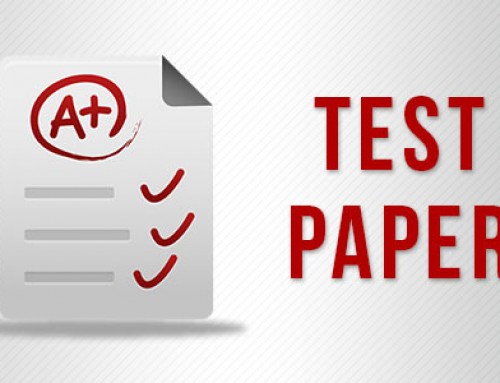Good morning class, today we will study topic of straight lines. We all know what is a straight line.
Let us talk about the centroid of the triangle. See, centroid is point of intersection of medians of
triangle. The point where two medians meet what do we call that point, centroid. For example, say
this is a triangle in which the first vertex is meeting with the midpoint of the second side and the
second vertex is also meeting with the midpoint of another side. So the point of intersection is called
centroid. In general it is denoted by capital G. The third median also passes through G and the
coordinates of centroid are x1 plus x2 plus x3 by 3, y1 plus y2 plus y3 by 3. So add the three x
coordinates and divide it by 3. And add the three y coordinates and divide by 3.
Next thing is slope of straight line. We will just have a quick revision of basic concepts of straight
lines, slope of straight line. If a straight line makes angle theta with positive direction of x axis then
its slope is tan theta. If that theta lies from 0 to 90 degrees, the slope is positive. The line will be like
this. If theta is pie by 2, then how will the line be, vertical line, so we call the slope as infinite tan 90
not defined is infinite. And if the slope is negative then the angle will be pie from pie by 2, the angle
will be more than 90 degrees. Theta is greater than 90. If a straight line passes through two points,
x1y1 and x2 y2, if a straight line passes through two points, x1y1 and x2y2, then its slope is y2 minus
y1 upon x2 minus x1. These are all basic concepts, we have studied all this in class 11th.
Next, angle between two straight lines. If the slope of one straight line is m1 and the slope of the
other straight line is m2 and between them there is angle theta. Tan theta will be modulus of m1
minus m2 upon 1 plus m1m2, tan theta is modulus of m1 minus m2 upon 1 plus m1m2. If two lines
are parallel then m1 equals to m2. When will two lines be parallel, when both their slopes are equal.
Two lines are perpendicular when m1m2 is minus 1, that is slope of one line is negative times
reciprocal of slope of other line. If two lines are perpendicular slope of one line is negative times
reciprocal of slope of other line.
Let us move forward, equations of straight lines, if a line passes through point x1y1 and its slope is
m, if a line passes through x1y1 and its slope is m then its equation is y minus y1 equals to m into x
minus x1. If any line is passing through a point x1y1 and the slope is m so that equation will be y
minus y1 equals to m into x minus x1. All the students know this and we have been using this for a
long time. Is it clear to everyone? Yes. So to get an equation of a line we need two things, one is
slope, other is point from which line passes.
Next, intercept form of line, if any line is intersecting x axis at a,o and y axis at o,b. If a line is
intersecting x acis at a,o and y axis at o,b so the equation of that will be x by a plus y by b equals to
one, x by a plus y by b equals to 1. How did you get that? You took a stroke at two points and then
taking any point wrote the equation of the line. Are you clear on all this?
General equation of line: ax plus by plus c is equal to zero. A linear equation in xy is equation of a
straight line. What will the slope of this equation be minus times a by b, minus times coefficient of x
divided by coefficient of y.
Distance of a point from the line: if we have to take perpendicular distance from one point to a
straight line, how will we do that? We will put the point on the line ax1 plus by1 plus c. We will take
the modulus of whatever value we get upon square root of a square plus b square. Distance of point
x1y1 from the line ax plus by plus c equal to zero is modulus of ax1 plus by1 plus c upon square root
of a square plus b square.
Next is distance between two parallel lines. If there are two parallel lines like this. One is ax plus by
plus c1 equal to zero. And other is ax plus by plus c2 equal to zero. So the distance between these
two lines will be modulus of c2 minus c1 upon square root of a square plus b square. If the
coefficients of x and y of the two parallel lines are the same so the distance between them will be
the difference of constant terms upon square root of a square plus b square.
Children, these were the few concepts of straight lines which we have done a quick and fast revision.
On the basis of all these concepts now we will solve questions.
Let us talk about first question. If vertex of triangle is 1,1 and mid points of two sides are minus 1,2
and 3,2, we have to find the centroid of triangle.






